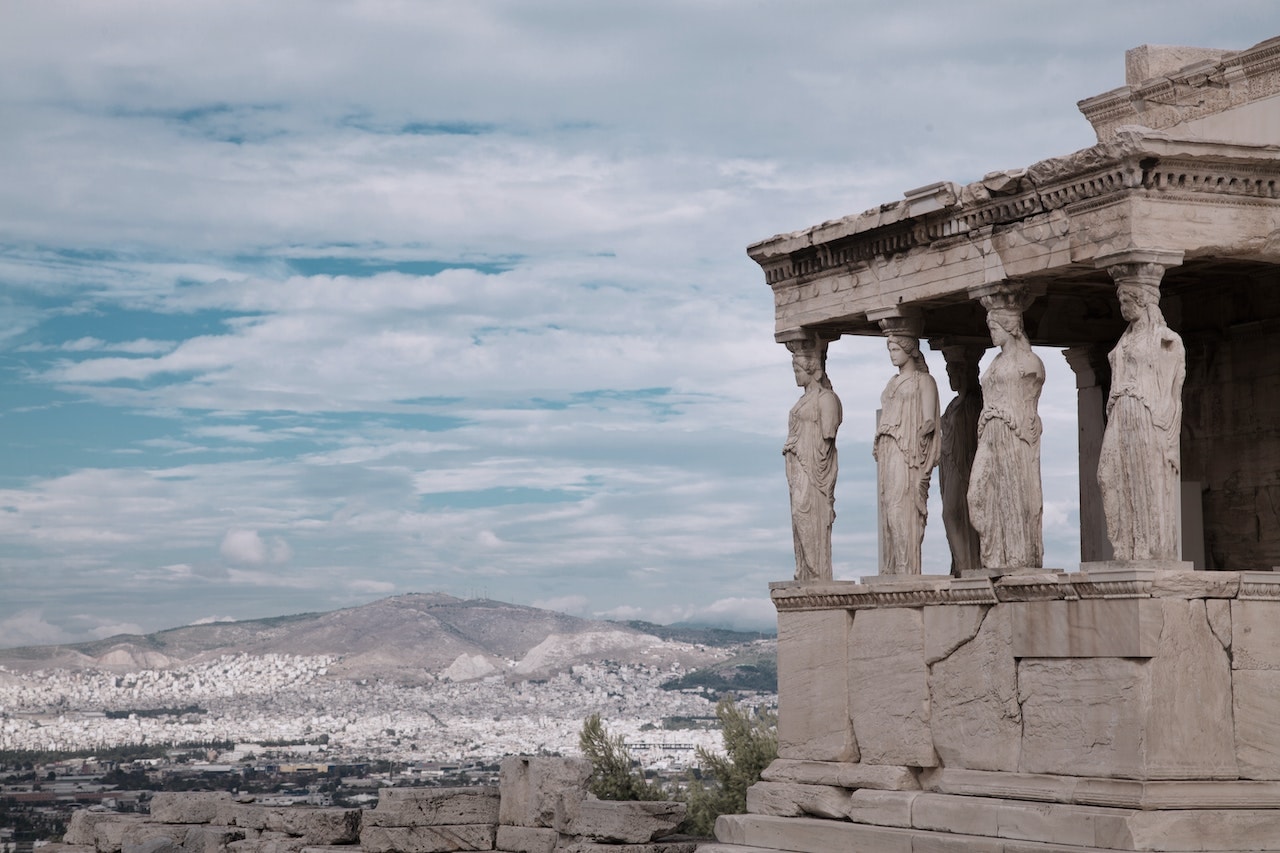
Table of Contents
Pagan gods or deities and pagan religions are the terms that Christians use to refer to any belief outside of Christianity. They started using this term during the 4th century A.D. to label those who chose not to obey or practice the Christian faith.
This term has become popular since then, especially in the Western side of the world, to refer to ancient Roman, Egyptian, Greek, and Celtic gods. In those times, that’s what people believed in, and there wasn’t anything wrong with it.
Polytheistic conceptualizations of what’s considered divine or powerful are far from a new concept. The idea revolves around the belief that there are many gods, rather than just one, with each of them having the domain of a specific area.
People believed that most of these Gods had control over the elements, or things like war, desire, wisdom, and so on. They were very careful to honor each one of them depending on the situation. Offering sacrifices, doing rituals, and making shrines for them.
In this article, you’ll find that we’ve collected some of the most famous pagan gods and goddesses from across all cultures, and we hope you’re ready to learn about them.
Gods Related to Water
In many cultures, people worshiped deities they believe controlled the rivers and oceans. On top of that, they also attributed these gods to phenomena such as typhoons, droughts, and how calm or agitated the oceans and rivers were.
Here we’ve listed some of the most remarkable gods of water:
1. Poseidon

Poseidon’s a god in Greek mythology that people believed controlled the seas and oceans in the ancient world. He’s older than Neptune, the Roman version of Poseidon, according to the history books, and thus, is one of the most ancient water gods.
The Greeks thought Poseidon had the sea, storms, earthquakes, and horses under his dominion. They usually depicted him as a man with a beard, holding a trident with a dolphin at his side. There are other depictions of him where he supposedly has tentacles or a tail instead of legs.
People in ancient Greece believed he had an important place in the Pantheon, and also attributed a fair share of Greek myths to him. A lot of ancient Greek literature references him as an important part of its story.
2. Neptune
Neptune was the Roman adaptation of Greece’s Poseidon. The Romans considered him the god of the sea and freshwaters. They also attributed hurricanes and earthquakes to him.
Aside from what people believed to be his powers, the Romans depicted him as a mature man with long white hair, a beard, and wielding a trident. Sometimes, people depict him on a horse-drawn carriage riding across the sea.
One of Neptune’s major differences from Poseidon is that the Greeks associated Poseidon with horses and depicted him as such before associating him with water. Neptune, however, never had a direct connection to horses.
3. Ægir
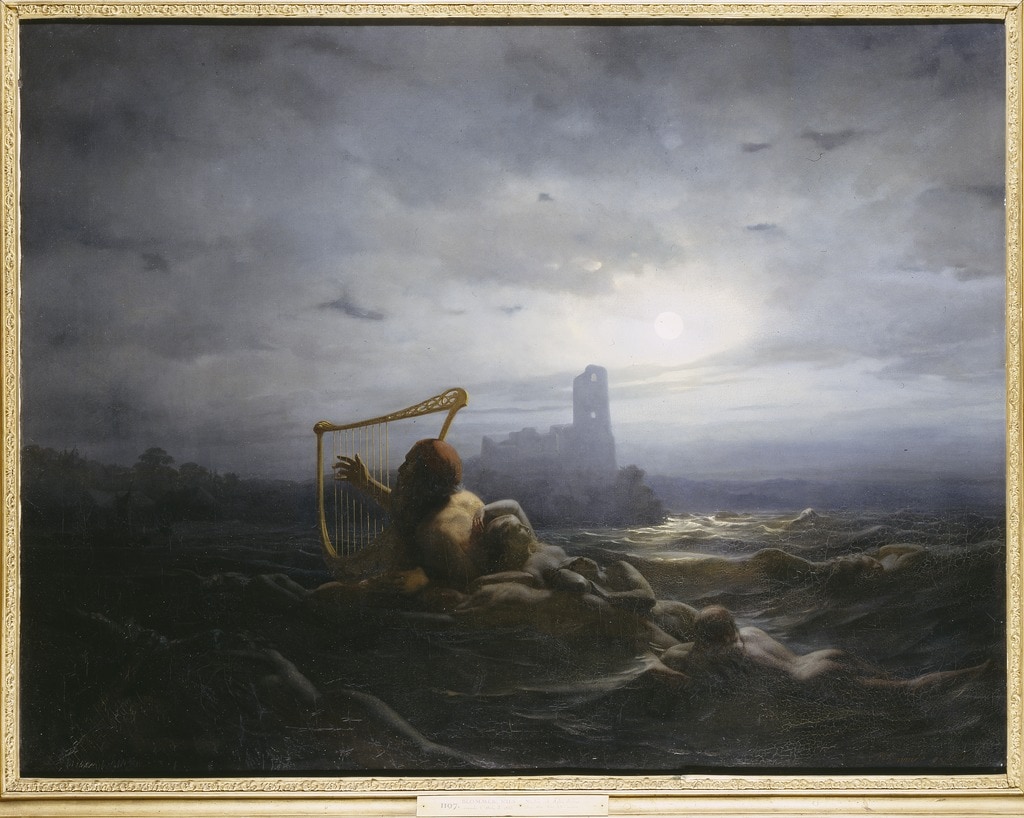
Ægir was a Norse deity. He wasn’t exactly a god, but something they called a Jötunn, which is an otherworldly being and akin to giants.
In Norse mythology, this deity was the embodiment of the sea in an anthropomorphic way, and his wife was Rán, a goddess that the Norse thought also personified the sea. Their myth also stated that the waves were considered their daughters.
Aside from the fact that Norse mythology associated him with the sea, there’s a myth in which he threw elaborate celebrations and parties for the gods. At these parties, he offered beer he made in a cauldron gifted by Thor and Týr.
4. Nun
“Nun” was an Egyptian god that played an important role in ancient Egyptian society and culture. The reason for this is because Egyptian mythology declared him the oldest of the Egyptian gods, and consequently, the father of the sun god Ra.
Egyptians attributed him to the annual flood of the Nile River. In contrast to this, there’s an Egyptian myth about creation where his female counterpart, Naunet, was the waters of chaos from where their son and the whole universe came into form.
Egyptians depicted Nun as boundless and turbulent, having the head of a frog on top of the body of a man. Despite all this, temples weren’t erected in his name, the Egyptian priests didn’t worship him, nor did he play any part in their rituals.
Gods Related to Thunder and The Sky
Interestingly enough, people across the ancient world also thought some deities controlled the sky. Consequently, most of these deities also had the characteristic of controlling thunder and lightning.
Here’s a list of the most famous gods of thunder so you can learn a bit about them:
1. Thor
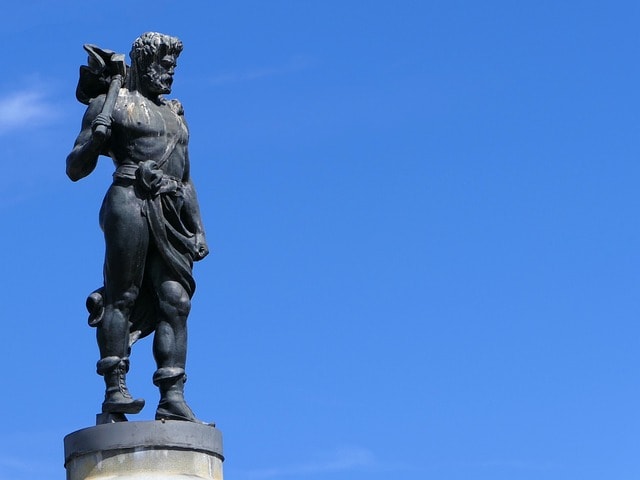
If you thought Thor was only a Marvel superhero, it might interest you to know that Marvel took inspiration from Norse mythology to make the character. In Norse mythology, Thor was the most well-known god in the Norse pantheon.
The name Thor comes from the Germanic word for thunder, alluding to what the Norse thought to be the source of his power. He is usually depicted as a man that wields a hammer called Mjölnir, which he invokes for protection and attributes to most of his victories.
Norse myths associate him with lightning, thunder, strength, storms, and the earth. In England, he was known as Thunor. In Scandinavia, they thought he brought good weather, and he was famous during the Viking Age when people wore his hammer as a lucky charm.
2. Jupiter
In Roman mythology, Jupiter was the supreme king of the gods and the god of thunder and the sky. He was the son of Saturn, so Pluto and Neptune were his brothers. He also was married to the goddess Juno.
Jupiter is the Roman adaptation of Greece’s Zeus, though he wasn’t an exact copy. The Romans usually depicted Jupiter as an older man with long hair, a beard, and carrying a lightning bolt with him.
Usually, an eagle accompanies him, which later became the symbol of the Roman Army, known as the Aquila. Jupiter was the chief god of Roman state religion throughout the Imperial and Republican eras until Christianity took over.
3. Taranis
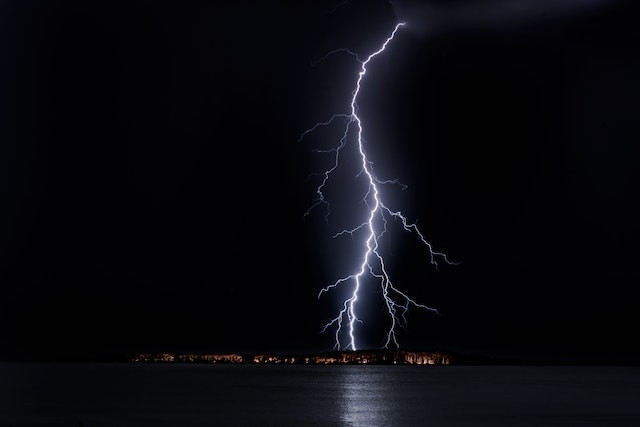
Taranis is a Celtic deity whose name translates as “the thunderer.” People in Gaul, Ireland, Britain, and Hispania worshiped him. Celts also associated him with the wheel of the year. Sometimes, he also got mixed up with Jupiter.
People depicted Taranis as a man with a gold club and the solar wheel of the year behind him. This solar wheel was important to Celtic culture because you could find its iconography in coins and amulets.
There are records of him being one of the gods that required human sacrifices. There’s not much information about Taranis, and most of it is what we could learn from Roman records.
4. Zeus
Zeus is the Greek god of the sky and thunder. According to the ancient Greek religion, he ruled as the king of the gods in Olympus. He’s the son of Cronus and Rhea and the only one to survive Cronus, making him legendary.
Hera, who was also his sister, was his wife, but he was extremely promiscuous. According to the myths, he had a myriad of children and gained a reputation as the “all-father” to the gods.
Greek artists depicted Zeus in three poses, which were him standing, seated in his majesty, or striding forward with his thunderbolt in his right hand. Artists made sure Zeus carries it in his right hand because the Greeks associated left-handedness with bad fortune.
Gods Related to Agriculture and Abundance
Farmers across different cultures and beliefs also had their gods and goddesses. These deities were in charge of blessing the mortals with a good year of planting and harvesting or decimating the crops if they angered them.
Here’s a list of the most relevant agriculture gods and goddesses:
1. Hermes
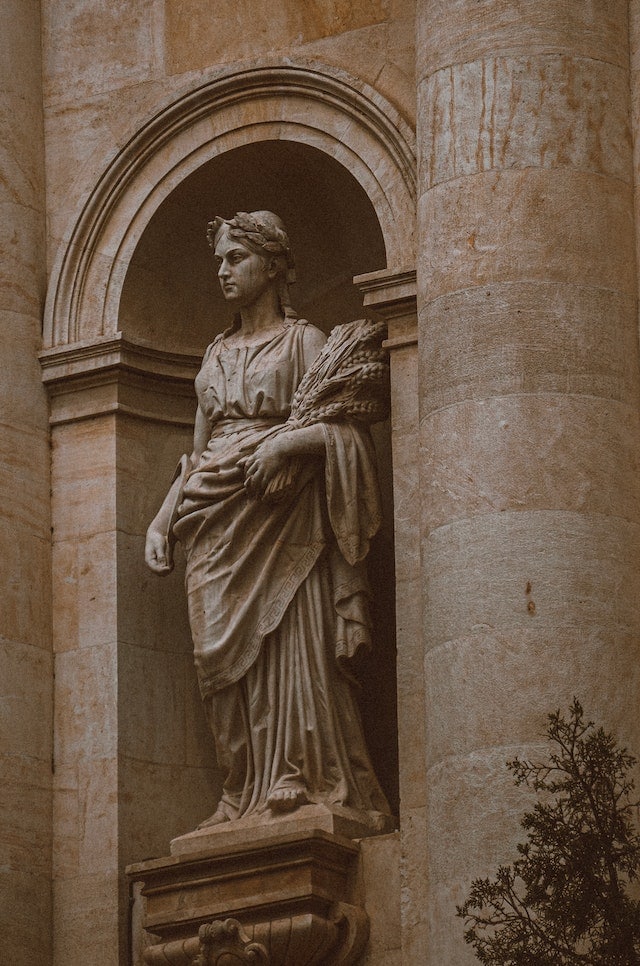
Hermes, in Greek mythology, is the Greek god for travelers, hospitality, herdsmen, and their flock. On top of that, the Greeks attributed him to other things, including thievery and mischievous behavior, which won him the title of the trickster god.
In the case of herdsmen, Hermes offered health to their livestock, prosperity, and good luck in their cattle trade; hence, Greek herdsmen were careful to honor him if they want their businesses to flourish.
Aside from all of this, people in ancient Greece said that he invented different implements and tools that herdsmen and shepherds used to work. This was another reason why the Greeks associated Hermes with the herdsman.
2. Ceres
The Roman adaptation of Greece’s Demeter is Ceres. She’s the goddess of fertile land, agriculture, crops, and grain. In addition to that, there’s the myth in which people believed that she gifted agriculture to humanity.
For Romans, Ceres was responsible for teaching agriculture to men. Now, on another train of thought, she nurtured Triptolemus, who grew up to be a plowman and was burdened with the task of scattering grain and seeds all over the world.
Triptolemus also got the assignment to be an agriculture teacher, so he could spread knowledge to those who had farms and prosper in the name of Ceres and Triptolemus. Fascinating, right?
3. Demeter

Demeter was the Greek goddess of agriculture and grains, and the Greeks attributed her power to the changing of the seasons. The myth states that she represented the changing of seasons because of Persephone, who was Demeter’s daughter and was only allowed to be with Demeter during certain months of the year.
This condition comes as a consequence of Hades stealing Persephone from Demeter. He didn’t want to give her back and was so reluctant that the only solution was a compromise. The compromise entailed that Hades would only keep her for four or six months.
So, Demeter would bear winter to mark the third of the year. Her daughter would then return during spring, establishing the change of the season, thanks to Hades’ desire to keep Persephone in the underworld.
4. Renenutet
The Egyptians veneered Renenutet, who was the goddess of harvest and of nourishment in their mythology. They usually described what she did as her being a motherly figure who watched over the crops and the harvest.
Aside from this, the Egyptians also attributed her with the power to protect the Pharaohs. Additionally, she also later became the goddess who controlled what each individual’s destiny or fate would come to be.
Mythology depicted her as a snake and sometimes with the head of a snake, which allowed her to defeat all her enemies with just a glance. Fortunately, she was also said to have a benevolent side where she would bless Egyptian farmers by looking over their crops.
Gods Related to the Earth
Aside from the agriculture gods and goddesses, there’s another set of gods and goddesses who had Earth, wilderness, and the countryside under their rule. These gods had to look over many realms and had interesting forms.
1. Jörð (Jord)
Weird as it sounds, Jörð isn’t a goddess in Norse mythology. She’s actually a jötunn and considered an enemy of the gods. Though, as we said before, jötunns are supernatural beings, sometimes depicted as giants.
Jörð is a goddess of the Earth, and her name translates to the words “land” or “earth”. The Norse saw her not only as the Queen of Earth but also as a part of the Earth itself. Likely being the daughter of Ymir, the original proto-jötunn, from whose flesh the Earth was created.
There are also myths that Jörð is Odin’s sister, the all-father god in Norse mythology. The reason why they think this, is because Odin is half jötunn and half Aesir. Interestingly enough, despite the belief they’re siblings, she’s also said to have been in an affair with Odin and given birth to Thor.
2. Cernunnos
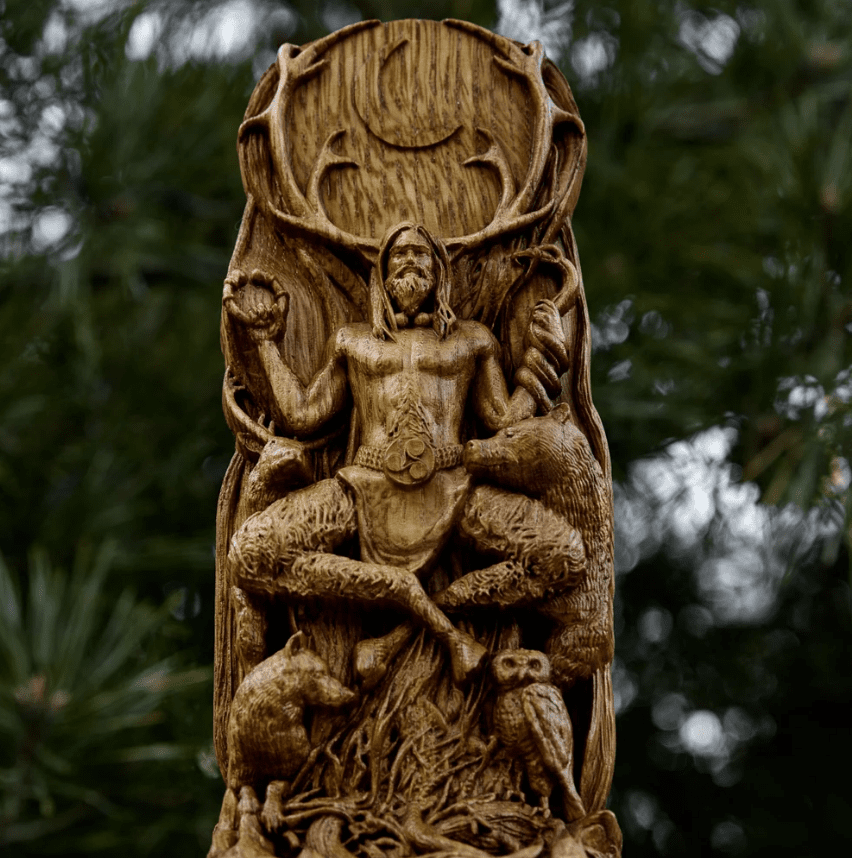
Cernunnos is a Celtic god. His name means “the antlered god”, and he’s depicted with zoomorphic features. The Celts thought he was the god of the countryside, fertility, and wild things. They usually describe him as a man with horns.
You can also find a ram-horned snake or a stag accompanying him in many of his images, and it’s because the Celts also believed that he was the king and guardian of all the animals.
The sanctuaries that the Celts had for him were usually around springs and clearings, which helped symbolize the restorative power of Cernunnos. However, Christians attempted to portray him as a devil because of his horns.
3. Diana
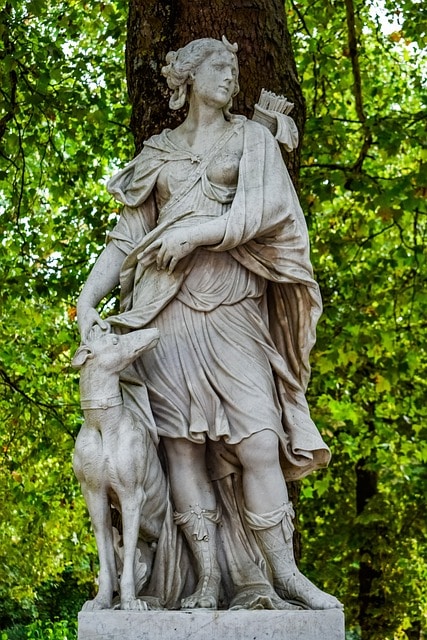
Diana’s a Roman goddess. Together with her twin Apollo, she’s the daughter of Latona and Jupiter. For the Romans, she was the goddess of the moon, fertility, wild animals, vegetation, and the hunt, but they also considered her the goddess of lower classes and slaves.
Diana had a whole festival dedicated to her on the Ides of August in Rome and Aricia, which was also a holiday. Roman mythology depicted her as a woman with her hair tied in a bun, wearing a tunic, and holding a bow and arrow.
Like many other Roman deities, Diana absorbed a great deal of Greece’s Artemis mythology. Additionally, she was part of a triad with two other deities from Roman mythology. They were Virbius, the woodland god, and Egeria, her assistant midwife.
4. Geb
Geb was an Egyptian god of the Earth and everything that came from it. According to an Egyptian myth, he also maintained the Earth in its place by holding it up. His laugh was believed to cause earthquakes.
The Egyptians usually described him as an anthropomorphic being with a snake that accompanied him, because he was also the god of snakes. However, he was later described as either a crocodile, a bull, or a ram.
The ancient Egyptians considered him to be of utmost importance to those who had recently passed away, because as the god of the Earth, he dwelled in the plain between Earth and the Underworld. Unfortunately, the Egyptians never dedicated a temple in his name.
Other Deities
Aside from all the categories, some deities also covered other areas we thought were interesting. There are a lot of gods and goddesses to learn about, covering various other aspects ranging from femininity to war.
Here we’ve arranged one last compilation of pagan gods and goddesses with different powers:
1. Apollo
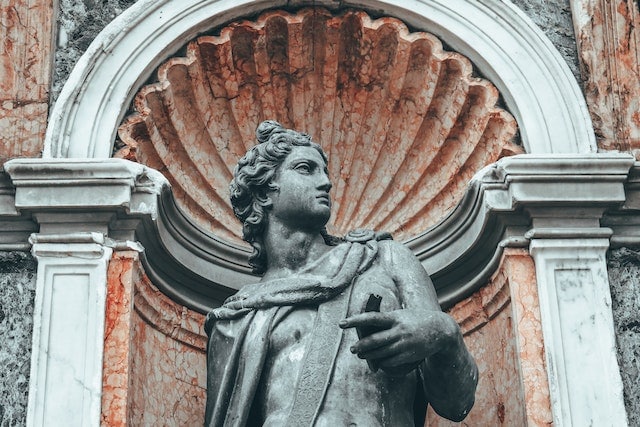
Apollo was a Roman god, Diana’s twin, and Jupiter’s son. Roman mythology stated that he was the god of archery, music, truth, healing, and light. Unlike most of the other gods whose names were changed when they were adapted, he managed to keep the same name as his counterpart in Greek mythology.
Roman mythology described him as a muscular young man without a beard and a cithara or a bow in his hand. He can also be found reclining on a tree in some of his images, and he has appeared in numerous myths and old pieces of literature.
2. Mars
Mars is the Roman god of war and the counterpart of Ares from Greek mythology. He is associated with agriculture and virility, and his personality is said to be aggressive.
Additionally, there’s a myth that says he’s the son of Juno. Mars and Venus were lovers, committing adultery, and are also considered to be the father of Romulus (who founded Rome) and Remus.
3. Aphrodite
In Greek mythology, Aphrodite was the goddess of sexuality and beauty. Her Roman equivalent is Venus. It is said that she was born from the white foam of the severed genitals of Uranus when Cronus threw them into the sea.
Aside from sexual love, fertility, and beauty, Romans associated her with the sea, seafaring, and war. She’s usually depicted as a beautiful young woman with her breasts exposed.
4. Juno
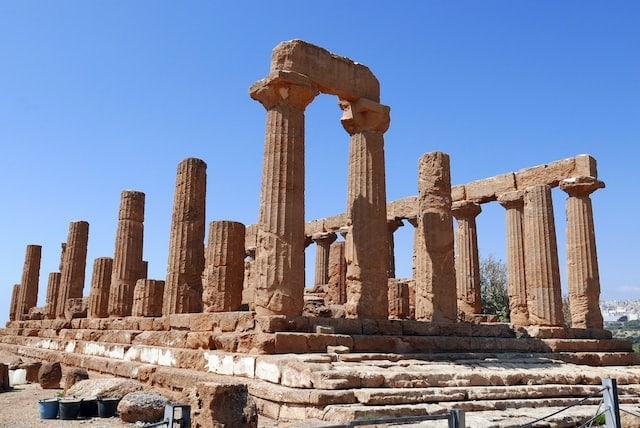
Juno was the Queen of Roman gods and goddesses. She was the daughter of Saturn, and Jupiter’s wife, who was also her brother and the King of all the gods and goddesses. Mars and Vulcan were her children.
The Romans worshiped her as the patron goddess of Rome and attributed her as the protector of pregnant women, birth, and the wealth of Rome. Believe it or not, the first coins in Rome were supposed to be minted in the temple of Juno Moneta.
Wrapping Up
There were many pagan deities from ancient times, from various mythologies. It would be a colossal task to try to list every one of them, but this article covers some of the most prominent from a variety of well-known mythologies.
These gods weren’t seen as benevolent or kind, or all-powerful like the later monotheistic religions. Rather, they were seen as powerful beings who had to be appeased, hence, the people favored and worshiped these gods throughout the course of history.








